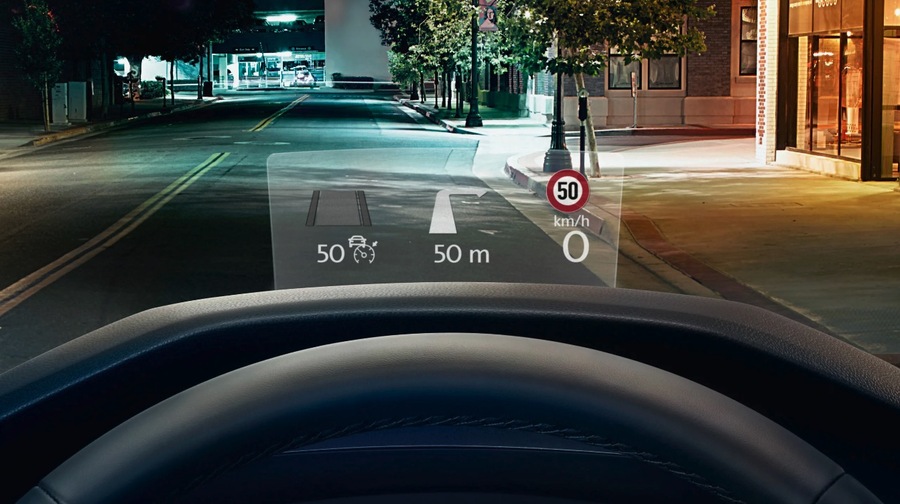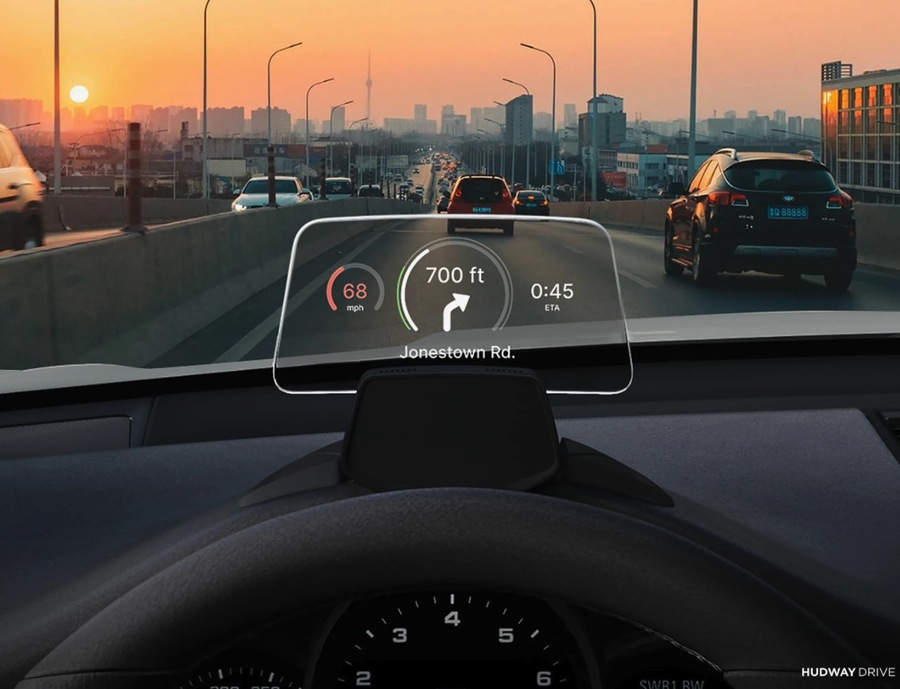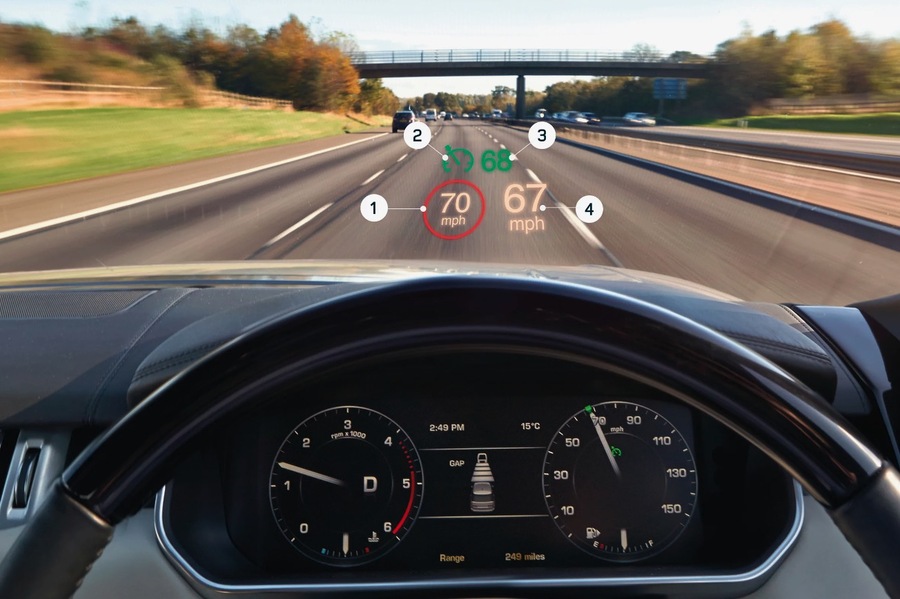Head-up displays (HUDs) in cars are advanced technological features that project crucial driving information onto the windshield or a retractable screen. This technology allows drivers to access essential data without diverting their eyes from the road, enhancing both safety and convenience. The information typically displayed includes speed, navigation instructions, and various warnings, making it easier for drivers to stay informed and focused while driving. For those looking for Dubai car rental, choosing a vehicle with a HUD can significantly improve the driving experience.
The History of Head-Up Displays in Cars
Early Beginnings
The first head-up display in a car was introduced in 1988 by General Motors in the Oldsmobile Cutlass Supreme sedan. This initial version displayed electronic speedometer readings directly in the driver’s line of sight. The innovation aimed to improve driving safety by allowing the driver to monitor speed without looking away from the road.
Evolution and Expansion
Initially, HUDs were limited to displaying monochrome information. However, advancements soon led to the introduction of color displays, primarily available in the premium segment of the market. Japanese manufacturers Nissan and Toyota followed suit, incorporating HUD technology into their vehicles. By 2003, BMW had also adopted similar technology, offering HUDs in their premium cars.
As the technology matured, BMW began to introduce HUDs in more budget-friendly models, allowing buyers to install the display as an optional feature. This democratization of HUD technology made it accessible to a broader range of consumers, further enhancing driving safety and convenience across various car models.

Types of Head-Up Displays
There are several types of head-up displays available in the market today:
- Standard Projection Display:
– Integrated into the car’s design.
– Projects information directly onto the windshield.
– Commonly found in many modern vehicles, especially in higher-end models.
- Mobile Projection Display:
– Portable units that can be added to any vehicle.
– Typically project information onto a small screen or film applied to the windshield.
– An affordable option for adding HUD functionality to older or lower-end cars.
- Smartphone-Based Projection Display:
– Uses a smartphone app and a special reflective screen to display information.
– Offers a cost-effective solution for drivers who want HUD capabilities without investing in a new vehicle.
– The app collects data from the car’s OBD system and projects it via the phone.
How Do Head-Up Displays Work?
The principle of operation of a head-up display (HUD) involves several key components:
– Electronic Projector Unit: Receives data from the vehicle’s OBD (on-board diagnostics) system. The projector processes this data and generates the image.
– Reflective Coating: The processed image is projected onto a reflective coating on the windshield or a retractable screen on the front panel. This coating ensures that the displayed information is visible to the driver under various lighting conditions.
– Display: The HUD projects critical information such as speed, navigation instructions, and warning signals directly into the driver’s line of sight.
Benefits of Head-Up Displays
Head-up displays offer several advantages for drivers:
- Enhanced Safety: By projecting information directly in the driver’s line of sight, HUDs reduce the need for drivers to look away from the road, thereby minimizing distractions.
- Convenience: HUDs can display various types of information that the dashboard might not provide, such as navigation directions, speed limits, and warnings about vehicles in blind spots.
- Advanced Features: Many HUDs come equipped with light and sound sensors, enhancing the driving experience. For example, the display can adjust its brightness based on ambient light conditions, ensuring optimal visibility at all times.
- Cruise Control Integration: Modern HUDs can integrate with advanced driver-assistance systems like adaptive cruise control, making long drives more comfortable and less stressful.
Information Displayed by HUDs
Depending on the design of the projection display, various information can be displayed on the screen, including:
– Speed: Real-time speed of the vehicle.
– Crankshaft Speed: Engine RPM (revolutions per minute).
– Navigation Instructions: Turn-by-turn directions and route information.
– Speed Limits and No Overtaking Signs: Road sign recognition and display.
– Blind Spot Warnings: Alerts about vehicles in the driver’s blind spots.
– Pedestrian Detection: Notification of pedestrians on the road, especially useful at night.
– Instrument Panel Warnings: Duplication of critical warning lights from the dashboard.
Reliable Manufacturers of Projection Displays for Cars
Several manufacturers are renowned for producing high-quality head-up displays for cars, including:
– Continental: Known for their innovative and reliable automotive technologies.
– Nippon Seiki: A leading supplier of HUD systems to various car manufacturers.
– Denso: Provides advanced HUD systems integrated with other automotive technologies.
– Bosch: Offers a range of HUD solutions known for their precision and durability.
The Main Advantages of Projection Displays in Cars
Head-up displays offer numerous benefits to drivers, such as:
– Reduced Distraction: The driver does not need to look away from the road to check the speedometer or other instruments, enhancing road safety.
– Enhanced Information Access: Displays information that the traditional dashboard may not provide, improving the overall driving experience.
– Adaptive Brightness: Some models are equipped with light sensors that adjust the display’s brightness based on the ambient light, ensuring visibility in all conditions.
– Advanced Driving Features: Integration with modern technologies like adaptive cruise control allows for a more relaxed and controlled driving experience.

Disadvantages of Head-Up Displays in Cars
While HUDs offer many benefits, there are also some disadvantages to consider:
– Cost: HUD systems, especially factory-installed ones, can be expensive to purchase and install.
– Complexity: The technology can be complex and may require professional installation and calibration.
– Limited Availability: Not all vehicle models offer HUDs, and they are often available only as an optional feature or in higher-end models.
– Potential for Glare: In some cases, the projected image may cause glare or be difficult to see in certain lighting conditions.
Conclusion
Head-up displays have revolutionized the driving experience by enhancing safety, convenience, and information accessibility. From their early beginnings in the 1988 Oldsmobile Cutlass Supreme to the advanced systems available today, HUDs have come a long way. They offer numerous benefits, including reduced driver distraction and improved access to critical information. However, they also come with some drawbacks, such as cost and complexity.
For those interested in experiencing the benefits of HUDs, many modern vehicles now offer this technology as standard or optional equipment. Whether you’re navigating the busy streets of a city or embarking on a long highway journey, head-up displays provide a valuable tool for safer and more informed driving.

Snowboarder, follower of Christ, music blogger, hand letterer and AIGA member. Acting at the crossroads of simplicity and sustainability to give life to your brand. Let’s chat.


